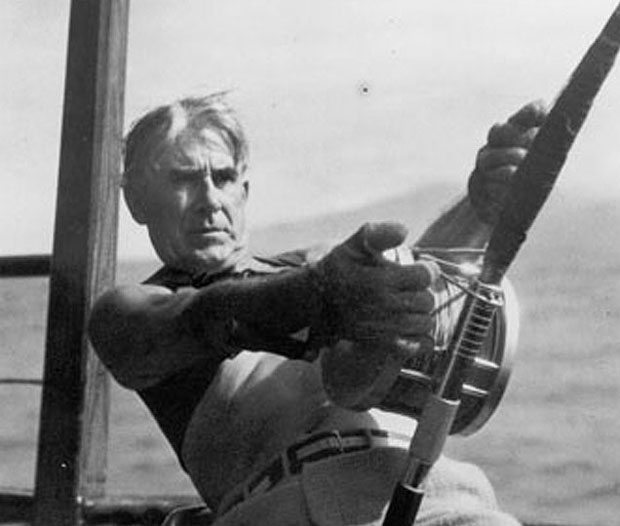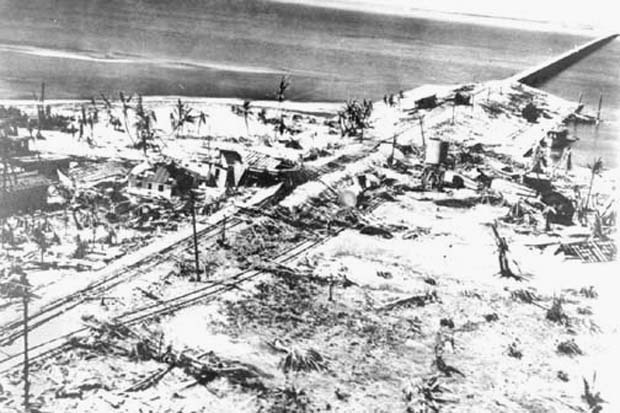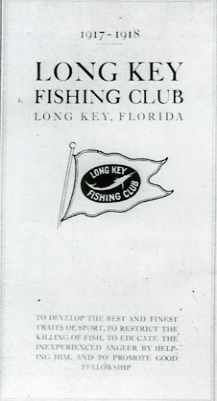With permission, the following was excerpted from the book Fly Fishing the Florida Keys by Skip Clement and Capt. Andrew Derr
[dropcap]Z[/dropcap]ane Grey, a dentist from Zanesville, Ohio and granddaddy of the western novel, changed thinking about fishing for sailfish, tarpon and bonefish – all of which, along with others, were considered nuisance catches. The kingfish would no longer be the “king.” Grey, unwittingly introduced the working man to light tackle fishing and it was embraced.

Zane Grey with newly designed reel. Photo courtesy on the E. K. Harry Library of Fishes – IGFA, Dania Beach, Florida.
In 1910, Zane Grey and his brother Roemer aborted their fishing trip while in Mexico when they heard of an epidemic where they intended to fish. They made their way back to Miami via Cuba. On a hunch, they decided to try the newly opened Long Key Fishing Camp on Long Key (Florida Keys). The camp, then reached by train from Miami (then the terminus of the Over-the-Seas Railroad venture – Miami to Key West). Henry Flagler, architect and financier of the railroad (1906 to 1912) had built the fishing camp to lure outdoor minded folks to utilize his rail line and stay at the state of the art facility where fishing was touted as outstanding.
Almost overnight Zane, through his writing voice, brought international fame to the Long Key Fishing Camp, which quickly matured into the Long Key Fishing Club (LKFC – 1910 to 1935). Zane Gray served as president for several years. It was here at the LKFC that he introduced anglers to “light tackle” fishing and gave credence to sailfish, bonefish, tarpon and several other species as worthy game fish. He lauded the speed of bonefish, power of tarpon and the acrobatics of sailfish. He enamored thousands of new anglers into the realm of sport fishing; companies sprung up to manufacture rods, reels and tackle paraphernalia. Boat builders hurried to meet demand, new magazines championed the outdoors and Zane Grey’s books on outdoor self-reliant ruggedness sold thousands of copies.

The remainder of the LKFC after the Labor Day hurricane of 1935. The partially standing building to the left of the tracks is the LKFC post office. Photo courtesy of Jerry Wilkinson.
Zane Grey’s accomplishments as an angler set the bar so high that celebrity fishermen of the day measured themselves against his feats, including Ernest Hemingway. Grey was also the first to promote releasing fish that were not going to be eaten. A dramatic departure from kill for the boast of it thinking that still perversely influences the remaining Neanderthal’s of our day.

In the 1920s a stay at the LKFC cost $6 per night for one person and $11 for two people and with a bath $7. Photo courtesy of Myria and Seth Bramson, Miami, Florida.
Grey not only defined the new sport of light tackle fishing – he was also instrumental in new concepts in rod, reel and line design and in rigging techniques and fishing tactics. For example, in 1925, the boat named Patsy, owned by a New Jersey guide named W. D. (Bill) Hatch, caught 113 sails in a season while 12 other captained guide boats managed only 106 in the same season. What Grey and Hatch had discovered was “bait and switch.”
Zane Grey was the Babe Ruth of fishing and presidents Hoover and FDR as well as celebrities of the day, from 1910 to the last season of the LKFC’s existence (1934), came to fish the waters of the Florida Keys with the “Babe.”
The LKFC was destroyed by the Labor Day hurricane of 1935.
NOTE: In the late 1960s, the LKFC was set to reform and an attempt to buy the original club property was launched by charter members such as Arthur Godfrey, Ted Williams, Jackie Gleason, Mike Douglas and Jimmy Carter (before he was president). However, it never came to be because the State of Florida declared eminent domain and made the property a park, which is enjoyed today by campers, birders, naturalists, bicyclers, kayakers, SUP boarders and anglers.


